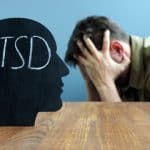
16
Apr
General Anxiety Disorder (GAD)
Symptoms
Psychiatrists divide anxiety into three main types: general anxiety, phobias and panic disorder. If there’s a particularly difficult situation at work or at home, the stress that this creates can spill over into other areas of life – and create anxiety.
Similarly, a person who’s experienced a very frightening situation may also carry the fear over to their everyday life. This is known as post-traumatic stress disorder. Though it’s little comfort to the person experiencing it, they can at least identify the cause of the emotions they’re experiencing.
In general, anxiety’s emotional turmoil appears to have a life of its own. Some psychiatrists call this ‘free-floating anxiety’.
Unlike phobia and panic, with general anxiety it’s not always clear to the anxious person exactly what it is they feel so anxious about. They’re just aware of feeling anxious all the time.
When there’s no identifiable cause, the person often becomes anxious about feeling anxious all the time, and the problem starts to feed off itself.
People with generalized anxiety may find that they:
- easily lose their patience
- have difficulty concentrating
- think constantly about the worst outcome
- have difficulty sleeping
- become depressed and/or
- become preoccupied with, or obsessional about, one subject
These mental symptoms lead to, and are supported by, physical symptoms. These can include:
- excessive thirst
- stomach upsets
- passing wind
- loose bowel movements
- frequent urinating
- failure to respond to sexual stimulation
- periods of intense pounding heart
- periods of feeling winded
- muscle aches
- headaches
- dizziness
- pins and needles
- tremors
- painful or no periods
The relationship of physical and mental symptoms can create a vicious cycle that can be triggered by a symptom at any point.
In panic, the cycle develops quickly to a crisis. With generalised anxiety, people often manage to keep things under control and the cycle grumbles on. The effort of keeping things under control is itself very stressful – and so adds fuel to the problem.
This is how some people come to feel anxious about their anxiety, making the problem even more intense.
How likely am I to have this?
Most people feel anxious at some time in their lives; however, about five per cent of people experience severe anxiety but rarely seek professional help.
How can I help myself?
The first step is to understand how anxiety works. Anxiety is a mixture of physical and mental symptoms. They are part of what psychologists call the ‘fight or flight’ response. When the body is under threat it automatically prepares either to defend itself or run.
Relaxation
To manage your anxiety you must first break the cycle. One way of doing this is to reduce the severity of physical symptoms by practising relaxation techniques.
There are two types of relaxation exercise: guided fantasy and muscle tension. It’s best to try them both to find out which one suits you best.
Relaxation isn’t an immediate fix for the problem. It’s a skill that must be learned and (like all skills) is only acquired through practice.
Exercise
Another strategy for breaking the physical symptoms of the vicious cycle is taking aerobic exercise. This is exercise that’s low impact – not involving carrying heavy weights or sudden exertion – and acts mainly on the heart. Any gentle physical activity that leaves the heart slightly racing will help.
By effectively giving the heart exercise it will, like any other muscle, become stronger. A stronger heart will be less prone to the kind of pounding that can make the physical symptoms so unpleasant.
Exercise will also help to release some of the tension that builds up and can fuel the anxiety.
Diet
Caffeine is present in many soft drinks, not just tea and coffee. Try to cut out caffeine as much as possible, since it can set up its own vicious cycle. It can speed up the heart rate and make you pass more urine – both signs of general anxiety. It can also disrupt your sleep, another sign of anxiety. If you’re tired you’ll be less in control of your emotions and more likely to feel anxious. Trying to overcome tiredness by drinking more caffeine only makes the long-term problem worse.
Similarly, too much alcohol or nicotine can worsen the symptoms of anxiety, and disrupt sleep.
Say “no”
This can be the very best therapy. It’s simply too easy to take on too much. You can find yourself in a situation where you have too many demands on your time. Often, no one thing is causing you anxiety, but as you try to fit more and more into your life you can become slightly anxious about each task.
This anxiety can build up, bringing you to breaking point. It’s as bad to feel a little anxious about a lot of things as it is to feel very anxious about one big thing.

16 Apr, 2024
Areas we service in Gold Coast
12 Feb, 2025
Complex Post Traumatic Disorder





0 Comments